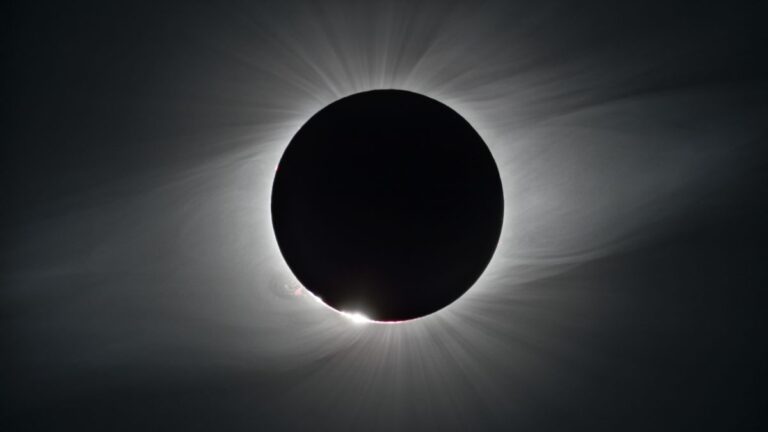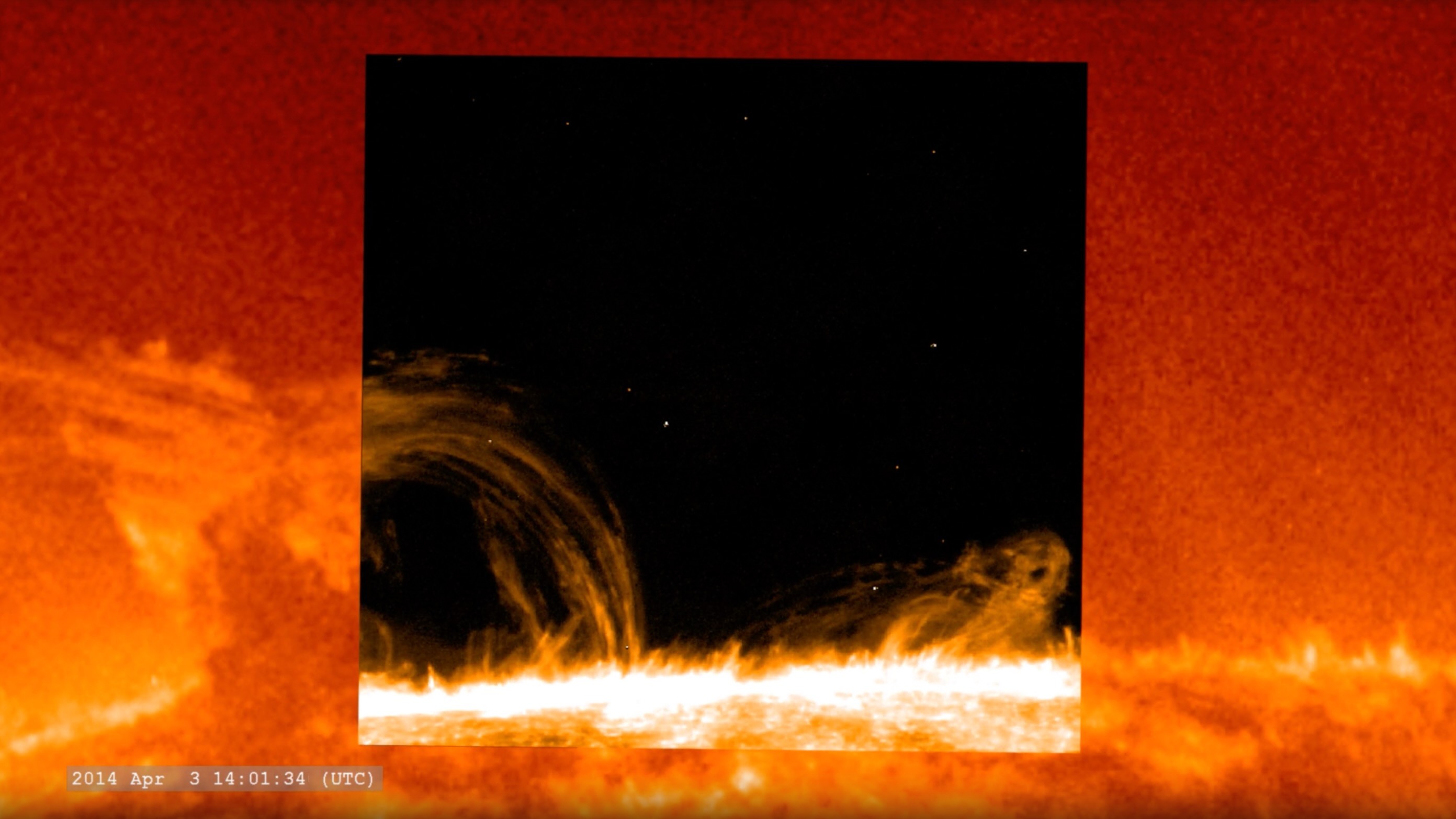
[ad_1]
Researchers are using artificial intelligence to try to solve a longstanding solar mystery.
At about 1.8 million degrees Fahrenheit (1 million degrees Celsius), the sun‘s outer atmosphere, or corona, is far hotter than its visible “surface,” the photosphere, which radiates at 10,340 degrees F (5,730 degrees C) at its hottest. However, nobody quite knows why the corona is so hot.
There are two leading theories as to the cause: heat liberated from dissipating plasma waves riding through the corona, and energy released through magnetic field lines breaking and reconnecting. Both seem to be active on the sun, but which is the dominant form of heating, or whether they both contribute equally, remains unknown.
Related: Sun breaks out with record number of sunspots, sparking solar storm concerns
Now, researchers at Northumbria University in England are turning to artificial intelligence to help answer this question. In one project, Patrick Antolin and Ramada Sukarmadji have teamed up with scientists at the Lockheed Martin Solar and Astrophysics Laboratory to use machine learning to hunt for small flares that release “nanojets” into the corona.
Nanoflares are an idea devised by solar physicist Eugene Parker (whom NASA’s Parker Solar Probe is named after) in the late 1980s. He postulated that, when magnetic field lines looping up and into the solar corona snap and reconnect, they release a sudden flare of energy. In 2021, Antolin and other scientists using data from NASA’s Interface Region Imaging Spectrograph (IRIS) mission observed nanoflares for the first time. The question is, do they occur often enough to explain the heating of the corona?
Because they are small, nanoflares and the resulting nanojets of energy are difficult to detect.
“At the moment, we can only identify nanojet occurrences by eye; what we need is a way of detecting them automatically,” said Sukarmadji in a statement. “They are very small, and the limited evidence we have suggests there are probably more than we think. But to really understand them further, we need to be able to detect them as they occur.”

By training A.I. algorithms to be able to recognize nanojets in imagery from space missions such as IRIS, the Parker Solar Probe, NASA’s Solar Dynamics Observatory (SDO) and the European Space Agency’s Solar Orbiter, the team hopes to get a better grasp on how often nanoflares occur.
Another side effect of magnetic reconnection in the corona that is being searched for by A.I. is a phenomenon called “coronal rain.” It occurs when reconnection causes localized drops in temperature within the corona. This causes denser clumps of plasma, some 150 miles (250 kilometers) across, to form and then fall out of the corona at 62 miles (100 km) per second, like gigantic shooting stars. When they impact the photosphere, brief but brilliant flashes and shock waves can result, prompting a surge of hot plasma back up toward the corona.
Antolin and fellow Northumbria solar physicist Luke McMullan are training A.I. on images of coronal rain seen by IRIS, and then employing those algorithms to enhance and search lower-resolution imagery taken by SDO for signs of coronal rain.
Together, these two A.I.-led quests for the effects of magnetic reconnection could finally answer the question of why the solar corona is so incredibly hot.
[ad_2]